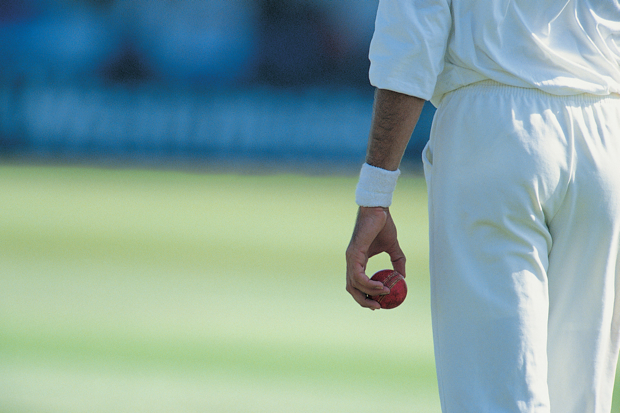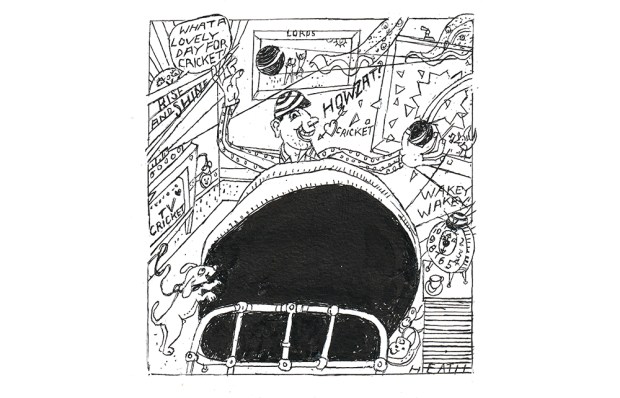For the past three months the cricket press has concentrated on the destruction of the England cricket team at the hands of Australia. It now emerges that correspondents were missing a bigger story.
While Mitchell Johnson was carving up the England batting order, the England, Australia and India cricket authorities were doing the same to international cricket. In a carefully planned ‘bear-hug style’ take-over bid, tabled in Dubai this week, India, England and Australia have seized effective control of world cricket. South Africa, New Zealand, Pakistan, the West Indies and Sri Lanka, not to mention minnows like Zimbabwe and Bangladesh, have been reduced to second-class citizenship.
If implemented, this would be a victory for the raw economic power of India, aided and abetted by England and Australia. According to an agreement thrashed out late on Tuesday night at the headquarters of the International Cricket Council in Dubai, India has been granted a ‘central leadership responsibility’. It will chair the ICC for two years from June 2014 during ‘a transitional period that includes a new governance structure and media rights cycle’. Since the ‘media rights cycle’ is shorthand for the bulk of revenues of world cricket from 2015–2023, cricket has entered, de facto and now de jure, the Age of India.
To understand the nature of this Indian coup, it is essential to have some grasp of the recent governance of world cricket. In 1965 the then Imperial Cricket Conference (originally founded in 1909 by England, Australia and South Africa) changed its name to the International Cricket Conference. It has 106 members: ten full members who play its official Test matches, 37 associate members and 59 affiliate members.
But while it had lost the term ‘Imperial’ in its name, the two dominant forces in world cricket, England and Australia, still had the power of veto. India, West Indies and Pakistan railed against this unsuccessfully in the 1970s. In July 1993, the dominant foundation nations finally lost their veto power and the ICC lost ‘conference’ from its title, substituting the word ‘council’. This 1993 settlement survived, with modifications, until this week’s coup at ICC headquarters in Dubai.
The ICC has since presided over a revolution in the development of cricket. Its budget in 1993 (when Colin Cowdrey, last of the amateurs, was president) was approximately £100,000. The organisation grew exponentially, generating a surplus over the 2001–2007 period of approximately US$ 300 million.
This surplus was divided among its members as follows: 75 per cent to the ten full members, in equal portions (so that India and the West Indies received the same amount), and 25 per cent to associates. The ICC was thus transformed in 20 years from a modest office funding the orderly administration of international fixtures to a global entertainment hegemon. This was brought about by exploiting the true market value of the sports rights to international cricket competitions (including, for instance, the world cup).
Equally importantly, in 1997 the ICC members reorganised the game’s international fixture list into the Future Tours Programme, a binding commitment by the ten full members to play each other twice on each other’s territory in five-year cycles, in series that consisted of at least two Test matches and three one-day internationals.
Remarkably, the economic arrangements for these bilateral commitments were similar to those that existed before the ICC settlement: namely the revenues and costs of the tours were enjoyed and borne by the host nation. It was held to be fair because the costs and revenues would scale together, even if both numbers were in some cases much bigger.
The 1993 ICC settlement was based on two fundamental arrangements: the equal distribution of ICC event (world cup) revenues among members and the obligation of all full members to play Test cricket against each other. This guarantees Test cricket between the most lucrative countries, such as India, and less lucrative opponents, such as New Zealand or West Indies. These arrangements were underpinned by a constitution which guaranteed that changes could effectively only be made by eight of the ten full members. Thus the proceeds were shared collectively, Test cricket was assured collectively, and decisions were approved collectively.
The economic power of these commercial rights and the transformation of the finances of the sport were not fully appreciated in 1993, except by a group of far-sighted entrepreneurs led by Rupert Murdoch and Subhash Chandra, whose Zee Corporation was India’s first satellite TV group.
In 2000 the ICC offered TV and sponsorship rights to all its forthcoming international tournaments by competitive tender, including the world cups of 2003 and 2007. It was rewarded with a fierce competition, principally between Subhash Chandra and Rupert Murdoch. The bundled rights were sold for $550 million, a staggering sum at the time. Eight years later, News Corporation trebled that to $1.8 billion. The rights for 2015–23 could fetch a mouthwatering $2.5 billion.
These arrangements for international competitions generated huge windfall gains for both full and associate members. But they have depended crucially on the enduring goodwill of India, which has in this period developed far and away the biggest audience for cricket.
In retrospect, India could undoubtedly obtain a far higher revenue if it sold its own rights separately, or if it simply demanded a higher share of the international tournament revenues. Given the success of the Indian Premier League, India would also profit handsomely if it removed Twenty20 competitions from the ICC bundle and negotiated rights sales for them on its own account.
India’s power is even more marked in bilateral tournaments, where the 1993 ICC settlement is based on a simple rule: all television rights, from all countries, accrue to the host. With an audience of 500 million viewers, Indian revenues are so much greater than any other country’s that a tour by India can transform any other country’s cricket finances. English tours are the next most profitable, then at some distance Australia’s. Other tourists trail far behind them. The difference is extraordinary: the economic benefit of hosting an Indian tour is ten times that of hosting a lesser nation.
India has exercised its economic power this week by proposing a new ICC settlement that would be materially to their advantage. So how do the new ‘principles’ of the 2014 ICC settlement alter the arrangements in India’s favour? First, the collective Future Tours Programme is scrapped. India will decide who, where and when to play. The money will be split using a principle of weighting, which essentially will give India a share calculated on the size of her massive media market. Leaked versions of the paper suggest India’s revenue from the ICC will rise from $100 million to over $500 million. That of the other countries will remain stable. While the leading six associate members such as Scotland and Ireland will gain, the smallest associate members will see a reduction in income that will hinder the global development of cricket.
A ‘new governance structure’ will also be designed. Supporters of the takeover will argue that these arrangements have not been finalised, and that protections should be negotiated for vulnerable countries. A cricket fund has been established to protect the Test game by distributing some Indian/English/Australian surpluses to the weaker Test nations. They claim that a bilateral tours programme is better than no tours programme at all, and that it could provide some nations with more, and better quality, Test cricket.
All this depends on the goodwill of India, but in reality that has been the case for a few years, since India has blatantly found excuses to avoid its obligations (particularly its obligations to play Test cricket against Bangladesh and Pakistan). The success of the financial revolution in cricket, with its weighting to India, has already rendered the 1993 settlement obsolete. Better a tamed Indian tiger than a schism in world cricket.
Above all, the argument goes, the new agreement preserves the solidarity of ownership of the international TV rights at ICC and national board level. This way, Test cricket can be protected from the ultimate nightmare, a breakaway global Twenty20 league, with broadcasters owning and operating the game.
These arguments have weight, but difficult questions remain. How will India use her economic power in cricket when she gains control of the world game? Can the 2014 ICC settlement provide enforceable checks and balances on Indian power far into the future? And will Test cricket as we know it survive? Test matches are the summit of cricket as a global sport. They established the likes of Sobers, Richards, Botham, Tendulkar, Muralitharan and Warne as global superstars. The very existence of Test cricket is now threatened, and without it we may never see players of such quality again.
Got something to add? Join the discussion and comment below.
Get 10 issues for just $10
Subscribe to The Spectator Australia today for the next 10 magazine issues, plus full online access, for just $10.
Peter Oborne is the Telegraph’s chief political commentator, an associate editor of The Spectator, and the biographer of Basil D’Oliveira.
You might disagree with half of it, but you’ll enjoy reading all of it. Try your first month for free, then just $2 a week for the remainder of your first year.














Comments
Don't miss out
Join the conversation with other Spectator Australia readers. Subscribe to leave a comment.
SUBSCRIBEAlready a subscriber? Log in